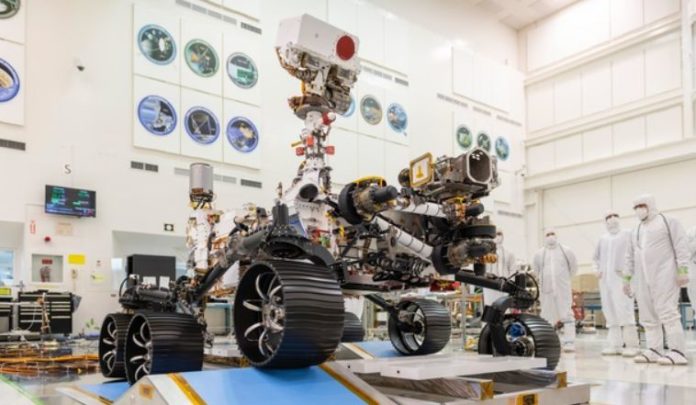The Mars 2020 mission rover successfully passed sea trials in the conditions of Terrestrial gravity, and also tested the operation of the radar instrument, which received the first data. The next time the rover will move on the surface of the Red Planet, this should take place in February 2021, according to the website of the NASA Jet Propulsion Laboratory.
The start of the Mars 2020 mission is scheduled for July 17, 2020, and on February 18, 2021, a rover created on the basis of the Curiosity design should land on Mars. Unlike its predecessor, the new Mars rover has a more advanced set of navigation systems and scientific instruments, as well as an unmanned aerial vehicle Mars Helicopter. The place of work of the devices will be the Jezero Crater, where the river delta was located in the past: the rover will be able to find different types of rocks in it, including clay minerals and carbonates, which could form in the presence of liquid water and save traces of ancient Martian life.
Experts are now preparing the rover for space flight in the sterile High Bay 1 room at NASA’s Jet Propulsion Laboratory. The Mars rover is fully assembled and has passed a series of thermal vacuum tests, now it is being tested for its autonomy and operability of all systems as a whole. Particular attention is paid to the chassis – according to the plan, the rover will overcome an average of 200 meters in one Martian day. Previously, the rover was already put on wheels, and on December 17, 2019, the engineers conducted the first sea trials of the rover, within which it moved for ten hours forward, backward and sideways with a step of one meter on small ramps covered with special antistatic mats that simulated uneven surface relief.
All rover systems worked well and smoothly, no problems with the chassis were noticed. Engineers believe that tests in terrestrial gravity confirm the operability of the device in Mars, where gravity is much less. In addition, the rover tested the RIMFAX (Radar Imager for Mars’ subsurface experiment) in the laboratory, which will explore the subsurface layer of Martian soil.
In March 2021, another rover was to land on the Oxia plateau on Mars. It will work as part of the ExoMars 2020 mission (a joint project of the European Space Agency and Roskosmos) and is named after Rosalind Franklin.
